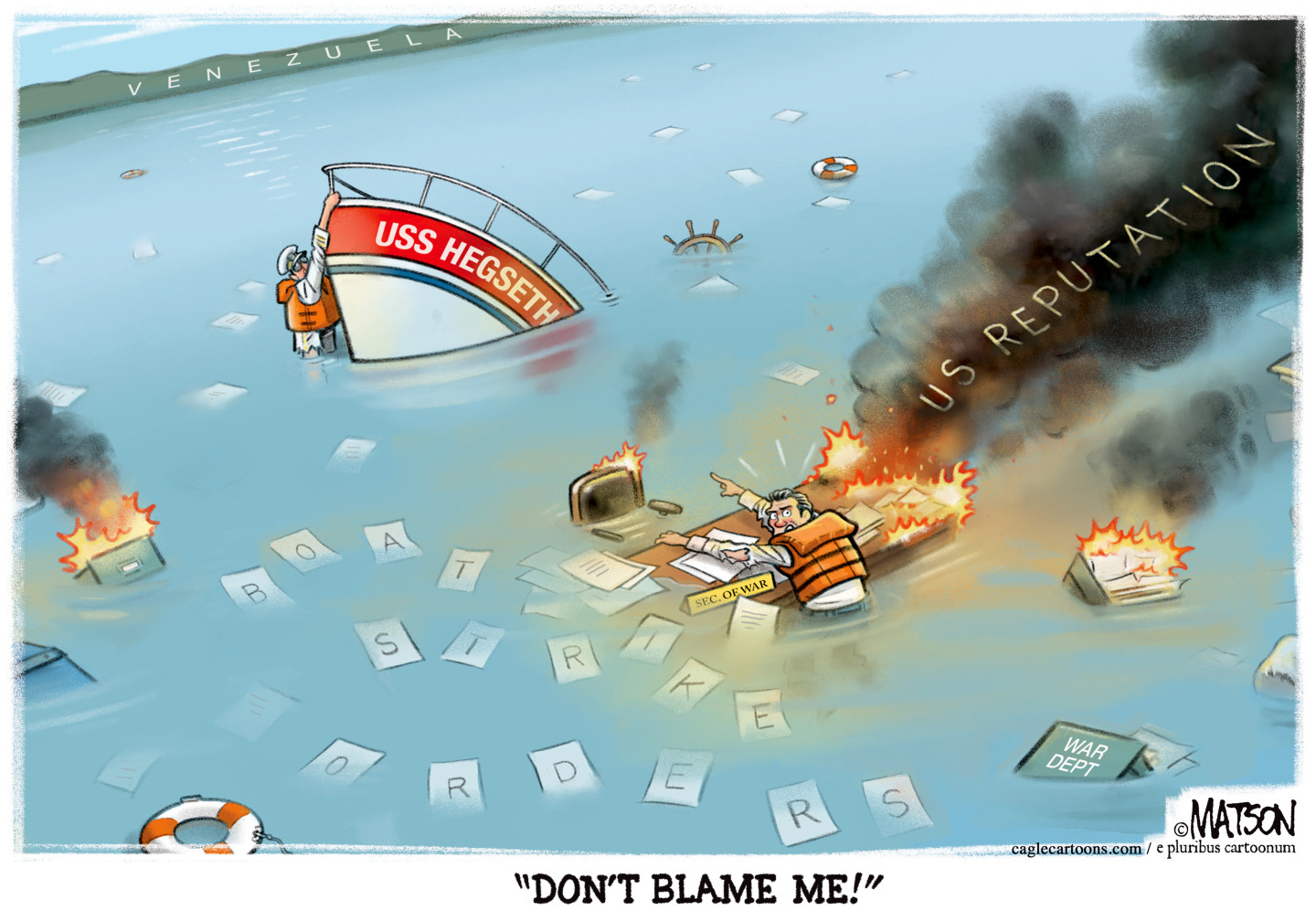Can Democrats change the game for labor organizing in America?
Bernie Sanders is leading the push for a whole new way for workers to bargain with their employers

American unions are not exactly having their best days. Nationally, membership is down to 10 percent of the workforce. While the labor movement isn't going down without a fight, it remains a shadow of its former self.
But among some of the biggest unions, and the more ambitious Democrats, a reform effort is afoot. This effort isn't simply about rolling back some of unions' more egregious losses in recent decades. Rather, their theory is that the entire legal framework for how unions operate in the United States is broken and needs to be reworked. "The current law is so broken and so defective" that "the right to organize doesn't exist anymore," as Mary Kay Henry, president of the Service Employees International Union (SEIU), recently told Vox.
At the root of the effort is what's called "sectoral bargaining" — most advanced western countries have it, and the U.S. doesn't.
The Week
Escape your echo chamber. Get the facts behind the news, plus analysis from multiple perspectives.

Sign up for The Week's Free Newsletters
From our morning news briefing to a weekly Good News Newsletter, get the best of The Week delivered directly to your inbox.
From our morning news briefing to a weekly Good News Newsletter, get the best of The Week delivered directly to your inbox.
Unions don't organize or bargain with employers in a state of nature. The process is closer to an organized sport, with government laws setting the rules for what both sides can and cannot do. Here in the U.S., those rules are mostly laid down by the National Labor Relations Act (NLRA), passed in 1935. And one of the things the NLRA says is that unions have to organize and bargain at the level of the individual workplace. Thus, even if a single big corporation owns a lot of hospitals, for instance, unions still have to organize each hospital individually, and strike an individual bargain with each hospital about wages and working conditions. There are some multi-employer contracts in the U.S., but these tend to be either contracts that were unionized and negotiated before the NLRA passed, like the auto industry, or special circumstances regulated by a different body of law, like airline workers.
With the sectoral bargaining in most other countries, things often occur at a far grander scale. Union representatives will sit down with business owners and elected officials, and the three groups will negotiate pay scales, schedules, working conditions, and so forth that will apply uniformly across an entire sector of the economy. Those sectors can be defined in various ways, from regional or geographic markets, to occupations across a country, to whole industries across a country.
Henry explained that unions organized by individual workplace are in an intrinsically weaker position. Conservatives don't like the NLRA because of the restrictions it places on employers, but labor arguably arguably faces even greater restrictions, with the absence of sectoral bargaining being among the most onerous. An employer that runs janitorial staff in a single building, or workers at a single warehouse, can lay off everyone from that site and walk away relatively easily if it doesn't like its employees' demands — there are plenty of other workers nearby who might work for less. But if the bargains unions strike apply to the entire relevant labor market, there's nowhere for the employer to go. This is how other western countries, like France or the Netherlands, can have union membership levels that aren't much different from America's, while the terms set by union contracts still cover almost every worker in the country. Sectoral bargaining works to both encourage union membership, and serves as a backstop to preserve union power even when membership is low.
In a recent paper, economist Arindrajit Dube noted that Australia makes extensive use of sectoral bargaining, and median wages there have grown considerably faster than in America, leading to less inequality. If we want to reconnect American wage growth to American productivity growth, sectoral bargaining looks like one effective route.
A free daily email with the biggest news stories of the day – and the best features from TheWeek.com
This is especially relevant to America's service economy, which tends to be characterized by lots of smaller worksites and franchises. And it's why the SEIU, which represents 2 million service workers — from janitors to teachers to security guards to health care workers, making it the second biggest union in the country — is making a full-court press to get sectoral bargaining into American labor law. "Imagine if in, L.A. and New York... fast food workers could organize a union, and create the conditions for all the fast food companies to be at a city-wide multi-employer table," Henry said. "They can rationalize schedules, they can deal with the burns on their arms — which is endemic in the industry — they can figure out how to get education and training located within the cities so they can build a better life for themselves."
Capitalism can be characterized by healthy competition or unhealthy competition. In healthy competition, businesses make profits by providing a better good or service at greater value than their competitors. In unhealthy competition, businesses make profits by aggressively exploiting and undercutting their workers. Essentially, sectoral bargaining removes wages and working conditions from the menu of items that businesses can change to maximize their profits vis-a-vis their rivals. It sets a floor under wages and conditions for all businesses competing with each other in a particular market. That prevents "races to the bottom," in which rival employers compete by seeing who can screw their employees the hardest.
How would sectoral bargaining work in practice? There are several different possible pieces.
Wage boards do a lot of the nuts and bolts work of sectoral bargaining. These are the boards to which unions, employers, and policymakers send representatives to decide on the pay scales and benefits packages and work conditions for a given sector. They're what Dube focuses on in his paper on the Australia example. Wage boards can incentivize union membership, since joining allows workers to participate in selecting representatives; they can also set pay scales up and down the jobs hierarchy, as opposed to just raising the minimum wage, and thus compress inequality all up and down the income ladder.
Crucially, wage boards could also help reform monetary policy. Right now, with unions siloed into adversarial bargaining relations with individual workplaces, the Federal Reserve officials who set interest rates also wind up viewing unions as problems to be squashed. Union demands for higher wages put upward pressure on inflation, which the Fed then tries to push back down by hiking rates and wrecking jobs, leading to disasters like the 1981 recession. Wage boards would provide a communication link between policymakers and unions, to negotiate wages — and the rate of wage growth — at the national level. Asking workers to back off wage hikes for a few years would've been a far better way to deal with the 1970s inflation crisis than crushing both the economy and millions of livelihoods.
Extending wage boards across the entire country would require a change to federal law. But at least five states — New York, New Jersey, Colorado, Arizona, and California — already have laws on the books allowing for state-level wage boards. These laws have generally gone unused, but Henry pointed out that use of New York's wage board law proved critical in helping build support for the state's recent passage of a $15 minimum wage. The SEIU views making much more aggressive use of those state opportunities as part and parcel of building the push for national reform.
The cleanest way to institute sectoral bargaining would be federal law to just create wage boards and apply them across the country. Yet it would also be the most ambitious route, and it's worth noting other moves that could build in that direction incrementally: There are contract extension laws, which basically take the terms and conditions negotiated by union contracts, and automatically apply them to an entire sector, once unions have organized a determined threshold of the sector. For example, the Baigent-Ready model, in use in Canada, automatically applies the terms of a union contract to all worksites that unions successfully organized in that sector, once two of those worksites have been organized. Prevailing wage laws could also be used to ensure that any federal spending is only doled out to contractors whose payscales match those negotiated by unions in their relevant sectors.
The most sweeping proposal to reform the NLRA and union bargaining along these lines is the Workplace Democracy Plan by Sen. Bernie Sanders (I-Vt.), which has been co-sponsored by other contenders for the Democratic presidential nomination like Sen. Elizabeth Warren (D-Mass.) and Sen. Kamala Harris (D-Cali.). Harris is also working with Rep. Pramila Jayapal (D-Wash.) on a separate bill that would create a wage board for domestic workers specifically.
There's always the possibility that a sufficiently right-wing Supreme Court could strike down these laws — there's no way around the need to reform the Court itself. But even the recent Janus decision, which gutted public sector unions, used logic relying on the fact that they were public unions specifically. Killing sectoral bargaining wholesale would likely require even more radical reasoning.
Along with the ongoing press from the SEIU, these bills — Sanders' in particular — arguably provide one of the best chances for America to expunge the unhealthy form of competition from its economy.
Jeff Spross was the economics and business correspondent at TheWeek.com. He was previously a reporter at ThinkProgress.
-
 5 criminally underrated cartoons about Pete Hegseth’s war crime
5 criminally underrated cartoons about Pete Hegseth’s war crimeCartoon Artists take on USS Hegseth, rats leaving the sinking ship, and more
-
 Can Mike Johnson keep his job?
Can Mike Johnson keep his job?Today's Big Question GOP women come after the House leader
-
 A postapocalyptic trip to Sin City, a peek inside Taylor Swift’s “Eras” tour, and an explicit hockey romance in December TV
A postapocalyptic trip to Sin City, a peek inside Taylor Swift’s “Eras” tour, and an explicit hockey romance in December TVthe week recommends This month’s new television releases include ‘Fallout,’ ‘Taylor Swift: The End Of An Era’ and ‘Heated Rivalry’
-
 Has Zohran Mamdani shown the Democrats how to win again?
Has Zohran Mamdani shown the Democrats how to win again?Today’s Big Question New York City mayoral election touted as victory for left-wing populists but moderate centrist wins elsewhere present more complex path for Democratic Party
-
 Millions turn out for anti-Trump ‘No Kings’ rallies
Millions turn out for anti-Trump ‘No Kings’ ralliesSpeed Read An estimated 7 million people participated, 2 million more than at the first ‘No Kings’ protest in June
-
 Ghislaine Maxwell: angling for a Trump pardon
Ghislaine Maxwell: angling for a Trump pardonTalking Point Convicted sex trafficker's testimony could shed new light on president's links to Jeffrey Epstein
-
 The last words and final moments of 40 presidents
The last words and final moments of 40 presidentsThe Explainer Some are eloquent quotes worthy of the holders of the highest office in the nation, and others... aren't
-
 The JFK files: the truth at last?
The JFK files: the truth at last?In The Spotlight More than 64,000 previously classified documents relating the 1963 assassination of John F. Kennedy have been released by the Trump administration
-
 'Seriously, not literally': how should the world take Donald Trump?
'Seriously, not literally': how should the world take Donald Trump?Today's big question White House rhetoric and reality look likely to become increasingly blurred
-
 Will Trump's 'madman' strategy pay off?
Will Trump's 'madman' strategy pay off?Today's Big Question Incoming US president likes to seem unpredictable but, this time round, world leaders could be wise to his playbook
-
 Democrats vs. Republicans: who are US billionaires backing?
Democrats vs. Republicans: who are US billionaires backing?The Explainer Younger tech titans join 'boys' club throwing money and support' behind President Trump, while older plutocrats quietly rebuke new administration
